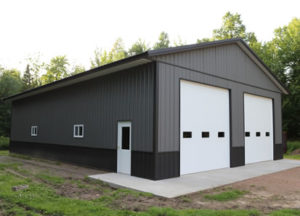
The Pros and Cons of Steel Buildings in 2023
As we explore the diverse landscape of construction materials, steel has emerged as a popular choice for both residential and commercial structures. Its popularity has continued to rise, particularly in 2023, due to a number of advantages it offers. However, like any construction material, it comes with its own set of challenges. In this blog post, we delve into the pros and cons of steel buildings in 2023.
COMPARE QUOTESPros of Steel Buildings
- Durability and Strength
One of the most touted advantages of steel is its exceptional strength and durability. Steel buildings are resistant to many of the common issues that can affect other materials, such as termites, rot, and mildew. They also hold up well in the face of harsh weather conditions, including strong winds, heavy snow, and even earthquakes, making them a safe and reliable choice.
- Sustainability
In the face of growing concern about climate change and environmental sustainability, steel stands out as a highly sustainable construction material. Steel is one of the most recycled materials in the world, and steel structures can be recycled at the end of their lifespan, reducing the amount of waste going to landfill. In addition, the process of steel production has become more energy-efficient over the years, further enhancing its green credentials.
- Speed of Construction
Steel buildings are often pre-engineered, meaning they are manufactured off-site and then assembled on-site. This can significantly reduce construction times compared to traditional methods. The quick installation not only saves time but also reduces labor costs.
- Design Flexibility
With its high strength-to-weight ratio, steel allows for long spans and open spaces, providing great flexibility in building design. This makes steel an excellent choice for structures like warehouses, aircraft hangars, and open-plan offices. Additionally, with advancements in technology, steel buildings can be designed to mimic the aesthetics of other materials, such as wood or brick.
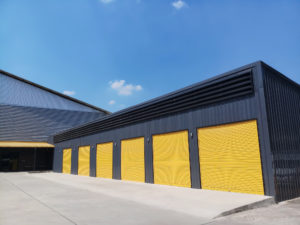
Cons of Steel Buildings
- Cost
While steel buildings can be more cost-effective in the long term due to their durability and low maintenance needs, the initial costs can be higher than traditional construction materials. This can make steel a less attractive option for projects with a tight budget. However, as production methods improve and become more efficient, these costs may decrease over time.
- Thermal Conductivity
Steel is a good conductor of heat, meaning it can lead to higher energy costs for heating and cooling a building. This can be mitigated with proper insulation, but that adds to the initial cost of the building.
- Corrosion
While steel is durable and resistant to many forms of damage, it is susceptible to corrosion, especially in humid or coastal environments. Proper treatment of the steel and regular maintenance can prevent corrosion, but this is an important consideration for the lifespan of the structure.
- Limitations in Residential Use
While steel’s design flexibility makes it excellent for many commercial applications, there can be some limitations when it comes to residential use. Traditional home designs may be harder to achieve with steel, and local building codes or homeowner association rules may limit the use of steel for residential buildings.
COMPARE QUOTESSteel buildings offer numerous advantages in terms of strength, sustainability, speed of construction, and design flexibility. However, considerations of cost, thermal conductivity, corrosion, and potential limitations in residential use should be taken into account. The suitability of steel will largely depend on the specific requirements of your project. By understanding both the pros and cons of steel buildings, you can make an informed decision that best suits your needs, budget, and long-term objectives.
Why You Should Consider Steel Buildings
As you evaluate your choices for a construction project, steel buildings can present an attractive option for several reasons. Let’s delve into why you should consider steel for your next building project.
Longevity
Steel buildings are renowned for their longevity. Unlike wooden buildings, steel does not suffer from issues like rot, mold, or termite damage. Moreover, steel’s resistance to common forms of wear and tear means these structures can last for decades with proper maintenance. Some key points to consider include:
- Resistance to high winds: Steel frame constructions are particularly well-suited to areas that experience high winds. Their strength and stability can withstand wind forces that might damage other building materials.
- Withstanding natural disasters: Beyond high winds, steel buildings also hold up well against other natural disasters, like earthquakes and heavy snowfall. This resilience makes steel an excellent choice in regions prone to such events.
- Impervious to fire: Unlike wooden buildings, steel structures are impervious to fire, enhancing their safety and durability.
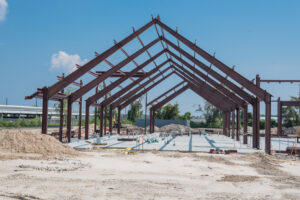
Appropriate Projects for Steel Buildings
Steel’s versatility makes it fitting for a wide range of projects. These include:
- Industrial buildings: The durability and open spaces offered by steel make it a popular choice for factories and warehouses.
- Commercial properties: Office buildings, retail stores, and restaurants can all benefit from the design flexibility and speed of construction offered by steel.
- Residential structures: Steel is gaining popularity in residential construction. Metal-building homes can offer a unique aesthetic and a high level of durability.
- Agricultural buildings: For structures like barns and storage sheds, steel’s resistance to pests and decay makes it an excellent choice.
Energy Efficiency
Properly insulated steel buildings can provide impressive energy efficiency. The insulation not only blocks heat transfer from the steel but also fills in any gaps in the building envelope, reducing drafts. This can help keep the building cool in the summer and warm in the winter, reducing heating and cooling costs.
Ease on the Construction Site
Steel buildings often involve pre-engineered parts that are manufactured off-site and then assembled at the construction site. This can significantly speed up the construction process, reduce waste, and make the construction site safer and cleaner. Furthermore, steel is lighter than some other materials, making it easier to transport and handle on-site.
COMPARE QUOTESThe longevity, versatility, energy efficiency, and ease of use on the construction site make steel buildings an attractive choice for a range of construction projects. Whether you’re planning a commercial development, a residential home, or an industrial warehouse, steel buildings offer numerous benefits that can make your project a success.
Metal Building Homes: The Future of Residential Construction?
As the search for durable, cost-effective, and eco-friendly housing continues, metal-building homes have emerged as a leading contender. This innovative approach to residential construction presents an array of unique advantages and potential challenges. Let’s explore why metal homes might be a fitting choice for your next residential project.
Advantages of Metal Building Homes
- Durability: One of the primary advantages of metal homes is their durability. These homes are designed to withstand high winds, heavy snow loads, earthquakes, and even fires. In addition, they’re impervious to common issues that can plague traditional wooden homes, such as termites and mold.
- Design Flexibility: Metal building homes offer a high degree of design flexibility. The strength of steel allows for large, open floor plans without the need for supporting columns. Moreover, the exterior can be finished with a variety of materials, such as brick, wood, or stucco, enabling homeowners to achieve a range of aesthetic styles.
- Energy Efficiency: Metal homes, when properly insulated, can be remarkably energy-efficient. The steel structure can be easily combined with high-quality insulation, helping to reduce heating and cooling costs.
- Sustainability: Steel is one of the most recycled materials in the world, and the components of a metal home can be recycled at the end of the building’s lifespan. Additionally, the pre-engineered construction process reduces waste on the construction site.
- Speed of Construction: Because the components of metal building homes are fabricated off-site, they can be quickly assembled on-site, significantly reducing construction time.
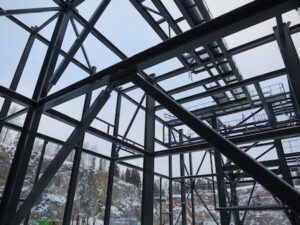
Considerations for Metal Building Homes
Despite the many advantages, there are a few considerations potential homeowners should keep in mind when opting for a metal-building home:
- Aesthetics: While metal homes can be designed to mimic traditional architecture, they do have a distinct aesthetic. Not everyone may find this appealing, and it may not blend in with all neighborhoods or architectural styles.
- Local Building Codes and HOA Rules: Some areas have specific building codes that may not allow for metal homes, and some homeowner associations may have rules against metal exteriors. It’s essential to research local regulations before committing to a metal home.
- Initial Cost: While a metal home can be more cost-effective over the long term due to reduced maintenance and energy costs, the initial construction costs can be higher than traditional wooden homes.
Metal building homes represent an innovative and increasingly popular approach to residential construction. Their durability, flexibility, and eco-friendliness make them an attractive option for homeowners looking to step into the future of housing. While they may not be the right fit for every situation, for many, the advantages will outweigh the potential drawbacks, making metal homes an excellent choice for modern, sustainable living.
COMPARE QUOTESThe Cost of Metal Buildings
Determining the cost of metal buildings requires consideration of a variety of factors. These can range from the size and type of the building to the cost of labor in your area, the complexity of the design, and the quality of the materials used. Below, we provide an estimated cost range for different types of steel buildings as of 2023. Please note that these are rough estimates and actual costs can vary widely.
Metal Building Homes
The cost of a metal building home can start from around $70 per square foot for a basic home and can go up to $250 per square foot or more for a high-end, custom-designed home. This estimate includes the cost of construction and finishes but does not include the cost of land or site preparation.
For example, a basic 2,000-square-foot home could start at around $140,000, while a high-end, custom-designed home of the same size could exceed $500,000.
Metal Garages
Metal garages are typically simpler structures and can cost between $30 and $50 per square foot. This means a typical two-car garage (about 500 square feet) could range from $15,000 to $25,000.
Commercial Buildings
Metal is a popular choice for commercial buildings due to its durability and flexibility. Costs can vary widely depending on the complexity of the design and the finishes used. A basic commercial metal building can start at around $50 per square foot, while a high-end, custom-designed building can exceed $200 per square foot.
For instance, a 5,000-square-foot commercial building could range from $250,000 for a basic structure to over $1,000,000 for a high-end, custom design.
Warehouses
Due to their larger size and simpler design, metal warehouses can be less expensive per square foot. Costs can start as low as $25 per square foot for a basic warehouse and go up to $70 per square foot for a warehouse with more advanced features.
This means a 20,000-square-foot warehouse could cost between $500,000 for a basic design to $1,400,000 for a more advanced building.
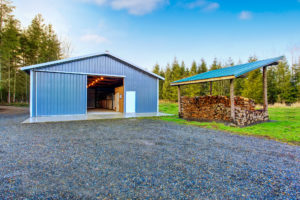
While these estimates provide a basic guideline, it’s important to note that the cost of any construction project can vary based on a wide range of factors. It’s always advisable to obtain several quotes from different builders and to carefully consider what features and finishes you require. With thoughtful planning, metal buildings can provide a cost-effective, durable, and flexible solution for a wide range of construction needs.
COMPARE QUOTESConstruction Process of Steel Buildings
Understanding the construction process of a steel building can help you better plan your project, communicate with your contractor, and ensure your vision comes to life. Below, we’ve broken down the typical construction process into several key stages, from initial design to the final touches.
Stage 1: Initial Design and Planning
Every successful construction project begins with thorough planning and design. During this stage, you’ll work with architects, engineers, or a design team to outline the building’s layout, size, and aesthetic. This is also the time to consider any custom features, such as specific window placements, interior partitions, or special finishes.
Stage 2: Site Preparation
Before construction can begin, the building site must be properly prepared. This generally involves clearing the land of vegetation, leveling the ground, and marking out the foundation’s footprint. Depending on the soil type and building’s size, some form of soil stabilization may be needed to ensure a solid base for the foundation.
Stage 3: Foundation Construction
The next step is constructing the foundation. For steel buildings, this typically involves a concrete slab, pier, or beam foundation. The foundation must be perfectly level to ensure the steel components fit together correctly. After the concrete is poured, it will need to cure for a specific period before construction can proceed.
Stage 4: Erection of Steel Frame
Once the foundation is ready, the pre-engineered steel components are brought to the site and assembled. Steel columns and beams are erected and bolted together to create the building’s skeleton. This stage often moves relatively quickly, as the components have been precisely fabricated for easy assembly.
Stage 5: Installation of Building Envelope
With the frame in place, the next step is installing the building envelope, which includes the walls and roof. This typically involves securing steel panels to the frame, though other materials can be used depending on the building’s design.
Stage 6: Installation of Doors and Windows
Once the envelope is secure, openings for doors and windows are cut out and the units are installed. The exact timing of this stage can vary depending on the specific project plan and the type of doors and windows being used.
Stage 7: Interior and Exterior Finishing
The final stage of construction involves finishing the interior and exterior of the building. This can include insulation, interior walls, flooring, plumbing, and electrical systems, as well as exterior finishes to enhance the building’s aesthetics and durability.
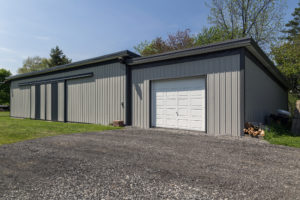
While the exact process can vary based on the project’s complexity and specific requirements, these stages represent the general process of constructing a steel building. Understanding these steps can help you manage your project effectively, ensuring a smooth construction process and a final product that meets your expectations. Remember, a reputable contractor will communicate with you at every stage, addressing any questions or concerns and ensuring your vision becomes a reality.
COMPARE QUOTESInsulating Metal Buildings: Maximizing Energy Efficiency and Comfort
Insulation is a critical aspect of any building, but it’s especially important in metal buildings. Steel, by nature, is an excellent conductor of heat, meaning it can quickly become hot in the summer and cold in the winter. Insulation acts as a thermal barrier, helping to maintain a comfortable temperature inside the building and increase energy efficiency. Here’s a comprehensive guide to insulating metal buildings.
Understanding R-Value
When it comes to insulation, one of the most important considerations is the R-value, a measure of thermal resistance. The higher the R-value, the more effective the insulation is at preventing heat transfer. The ideal R-value for your metal building will depend on your local climate and the building’s intended use.
Types of Insulation for Metal Buildings
There are several types of insulation suitable for metal buildings, each with their own pros and cons.
- Fiberglass Insulation: This is the most common type of insulation used in metal buildings. It’s cost-effective, non-flammable, and provides excellent thermal resistance. However, it can retain moisture, which can lead to mold and mildew.
- Spray Foam Insulation: Spray foam provides excellent thermal resistance and seals gaps and seams effectively, helping to prevent drafts. It’s more expensive than fiberglass, but it also provides better R-values and is resistant to moisture.
- Rigid Board Insulation: Made from materials like polyurethane or polystyrene, rigid board insulation offers high R-values and excellent moisture resistance. It’s particularly well-suited for flat roofs and walls.
- Reflective or Radiant Barrier Insulation: This type of insulation works by reflecting radiant heat, making it particularly effective in hot climates. It’s usually used in conjunction with another type of insulation.
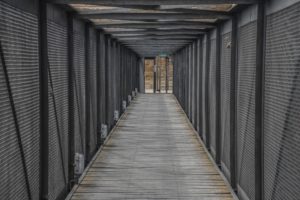
Installation Considerations
For the most effective insulation, it’s crucial to pay attention to the details during installation. Seams and edges should be tightly sealed to prevent drafts, and special care should be taken around doors, windows, and vents.
In a metal building, it’s also essential to consider condensation. Because metal can rapidly change temperature, it can lead to condensation, which can damage insulation and lead to mold and mildew. Using a vapor barrier, or choosing insulation that includes a vapor barrier, can help mitigate this risk.
Properly insulating your metal building can significantly enhance its energy efficiency and make it more comfortable for occupants. Whether you’re insulating a residential, commercial, or industrial metal building, understanding the role of insulation, knowing your options, and paying careful attention to installation can help ensure your building is energy-efficient and comfortable year-round. Remember, it’s always a good idea to consult with a building professional to choose the insulation that best suits your specific needs.
COMPARE QUOTESChoosing a Contractor for Your Metal Building Project
Selecting the right contractor is one of the most critical steps in your metal building project. The right contractor can ensure your project runs smoothly, stays within budget, and results in a high-quality building that meets your needs. Here are some factors to consider when choosing a contractor:
Licensing and Insurance
Ensure the contractor you choose is licensed in your state and carries adequate insurance. Licensing indicates that the contractor meets certain professional standards and requirements, while insurance protects you in the event of accidents or damage during construction.
Experience with Metal Buildings
Building with steel requires specific skills and knowledge, so it’s important to choose a contractor with experience in this area. Ask potential contractors about their experience with metal buildings, including the types of projects they’ve completed and the challenges they’ve encountered.
References and Reviews
Ask for references from past clients and take the time to call them. This can give you insights into the contractor’s reliability, quality of work, and customer service. Online reviews can also be a valuable source of information.
Communication
Good communication is key to a successful construction project. Choose a contractor who listens to your needs, answers your questions, and keeps you informed throughout the project.
Pricing
While it can be tempting to go with the lowest bid, remember that you often get what you pay for. Look for a contractor who offers a fair and transparent price, with a detailed breakdown of costs.
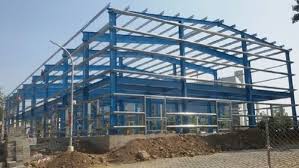
Top Metal Building Suppliers
In addition to finding the right contractor, you’ll also want to consider who will supply your metal building. Here are some top metal building suppliers known for their quality and reliability:
- General Steel: One of the most recognized names in the industry, General Steel offers a range of high-quality metal buildings for various uses, including homes, garages, and commercial buildings.
- Morton Buildings: With over 100 years in the business, Morton Buildings is known for its high-quality steel and wood-frame buildings.
- Olympia Steel Buildings: Olympia Steel Buildings offers a range of pre-engineered metal buildings with a focus on durability and affordability.
- Armstrong Steel: Known for their high-quality materials and customer service, Armstrong Steel offers a range of customizable metal buildings.
- Rhino Steel Building Systems: Rhino offers pre-engineered steel buildings with a focus on durability and ease of assembly.
Remember, it’s always important to research and compare different suppliers to find the one that best suits your project’s specific needs and budget.
Choosing the right contractor and supplier for your metal building project can significantly impact the success of your project. By taking the time to research and consider your options, you can find a team that delivers a high-quality building that meets your needs, budget, and timeline. Remember, the best partnerships are built on quality, communication, and trust.
COMPARE QUOTESMaintaining and Caring for Metal Buildings
While metal buildings are known for their durability and longevity, they’re not entirely maintenance-free. Regular upkeep is essential to ensure your metal building continues to look good and perform well for years to come. Here are some tips and recommendations for maintaining and caring for metal buildings.
Regular Inspections
Make it a habit to inspect your building regularly. Look for any signs of damage or wear and tear, such as rust, dents, or loose parts. Regular inspections can help you catch minor issues before they become significant problems.
Cleaning
Cleaning is an integral part of metal building maintenance. Dust and grime can hide issues such as rust or corrosion. Use mild soap and water to clean the exterior of your building regularly. Avoid harsh or abrasive cleaners, which could damage the finish.
Rust Prevention and Treatment
Even though metal buildings are designed to resist rust, they’re not immune to it. If your building is in a humid or coastal area, it’s especially important to keep an eye out for rust. If you notice any rust spots, it’s crucial to treat them as soon as possible. Remove the rust with a wire brush, then apply a rust-proofing product to the area.
Roof Maintenance
Roof leaks can lead to serious issues, including structural damage and mold growth. Inspect your roof regularly, looking for signs of leaks, loose panels, or damage. Clear the roof of debris, such as leaves or branches, which can retain moisture and cause corrosion.
Door and Window Care
Doors and windows can be a weak point in metal buildings. Make sure they are well-sealed to prevent air leaks, which can impact your building’s energy efficiency. Lubricate moving parts regularly to ensure they open and close smoothly.

Landscaping
Believe it or not, landscaping can play a role in metal building maintenance. Trees and shrubs should be kept trimmed back from the building to prevent damage from branches and to avoid trapping moisture, which can lead to rust.
Professional Maintenance
While there’s a lot you can do on your own to maintain your metal building, don’t hesitate to bring in professionals for more complex tasks, such as roof repairs or structural issues. Professionals can also perform a more comprehensive inspection and spot potential problems that you might miss.
Maintaining and caring for your metal building is an ongoing process, but it doesn’t have to be complicated or time-consuming. With regular inspections, prompt attention to any issues, and a bit of preventative care, you can ensure your metal building remains in excellent condition for many years to come.
Customization Options for Metal Buildings
One of the key advantages of metal buildings is their adaptability. With a wide range of customization options, you can design a metal building that fits your specific needs and aesthetic preferences. Let’s explore some of the ways you can customize your metal building.
Exterior Finishes
Metal buildings no longer have to look like traditional, bare-metal structures. Today, a variety of exterior finishes can give your building a unique look. These include:
- Metal Panels: These can come in various colors and textures, offering a modern, sleek look.
- Faux Stone or Brick: Stone or brick finishes can give your metal building a classic, timeless appearance.
- Stucco: A stucco finish can provide a smooth, minimalist look and can be painted in a variety of colors.
Windows and Doors
The placement, size, and style of windows and doors can greatly impact the functionality and aesthetic of your metal building. Large windows can invite natural light, improving energy efficiency and creating a pleasant indoor environment. Sliding glass doors can create a seamless transition between indoor and outdoor spaces.
Interior Partitions
Interior walls or partitions can be used to create separate rooms or sections within your metal building. This can be especially useful for metal building homes or offices, allowing you to customize the layout to fit your needs.
Roof Styles
The style of your roof can greatly impact the look and function of your building. Gable roofs, with their traditional triangular shape, are common for residential and commercial buildings. For industrial or agricultural buildings, you might consider a gambrel or barn-style roof for added interior space.
Flooring Options
Flooring can greatly impact the look and feel of your metal building. Concrete flooring, for example, can offer a modern, industrial look, while wooden flooring can create a warm, inviting atmosphere. For commercial or industrial applications, you might consider epoxy or polished concrete for its durability and ease of maintenance.
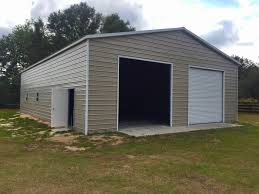
Insulation and Ventilation
Proper insulation and ventilation are essential for maintaining a comfortable and energy-efficient building. You can customize the type and amount of insulation used, as well as the placement and type of vents or HVAC systems.
Additional Features
Additional features, such as skylights, canopies, porches, or interior mezzanines, can further customize your metal building to fit your needs and style.
The customization options for metal buildings are virtually endless. With careful planning and consideration, you can design a metal building that perfectly aligns with your aesthetic preferences and functional requirements. Whether you’re planning a simple metal garage or a complex commercial facility, the ability to customize your building ensures that your project will meet your unique needs and vision.
Steel vs. Other Building Materials: A Comparative Analysis
Choosing the right building material is a crucial decision in the construction industry. This choice can impact everything from the project’s cost and timeline to the building’s durability, maintenance needs, and environmental impact. Let’s delve into a comparative analysis of buying steel buildings versus other popular building materials like wood, concrete, and brick.
COMPARE QUOTESSteel Buildings
Steel construction has been gaining popularity due to its numerous benefits:
- Durability and Strength: Steel is highly resistant to many common issues that plague wooden structures, such as termites, rot, and mold. It’s also better equipped to withstand high winds, earthquakes, and heavy snow loads.
- Speed of Construction: Steel buildings are typically pre-engineered, meaning they can be erected in less time compared to buildings made from other materials.
- Less Maintenance: Steel buildings require less maintenance over their lifespan. They’re resistant to rust and corrosion, especially when treated with special coatings.
- Versatility: From steel barns to metal houses, steel is highly versatile. Its high strength-to-weight ratio allows for large open spaces without the need for support columns, offering greater design flexibility.
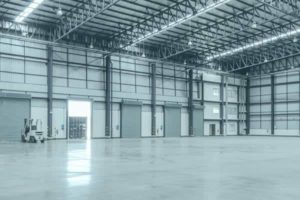
Wooden Buildings
Wood is a traditional building material with its own set of benefits and challenges:
- Aesthetics: Many people appreciate the natural, warm look of wood. It can also be easily painted or stained to achieve a variety of looks.
- Ease of Construction: Wood is relatively easy to work with, which can speed up construction times. However, wooden structures like pole barns may require more maintenance over time due to susceptibility to pests and weather damage.
- Insulation: Wood has natural insulating properties, which can contribute to energy efficiency. However, wooden buildings still require additional insulation to maintain comfortable temperatures.
Concrete Buildings
Concrete is a common choice for many types of buildings, offering several key advantages:
- Durability: Concrete is highly durable and resistant to fire, wind, and water. It doesn’t rot or rust and is not susceptible to pests.
- Soundproofing: Concrete provides excellent sound insulation, making it a good choice for buildings in noisy areas.
- Longevity: Concrete buildings can last for many decades with proper care. However, they can be costly and time-consuming to construct compared to steel buildings.
Brick Buildings
Brick offers a classic look and several advantages:
- Aesthetics: Brick is often chosen for its aesthetic appeal and the perception of quality it provides.
- Low Maintenance: Brick requires relatively little maintenance and can last for many years. It’s also fire-resistant and not prone to pest damage.
- Insulation: Brick has good insulating properties, helping to keep buildings cool in summer and warm in winter.
However, brick construction can be time-consuming and costly, and it offers less flexibility for interior spaces compared to steel framing.
Each building material has its strengths and weaknesses. Your choice will depend on several factors, including the project’s budget, desired aesthetic, and functional requirements, as well as local climate and building codes. While steel offers notable advantages in terms of durability, speed of construction, and maintenance, it’s essential to consider all factors when choosing the best material for your specific project.
COMPARE QUOTES
Leave a Reply